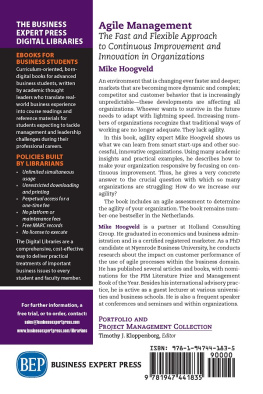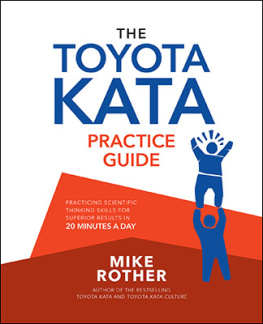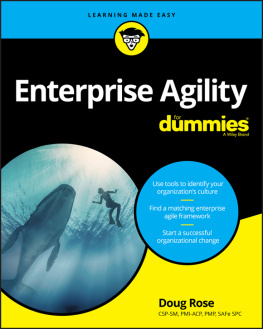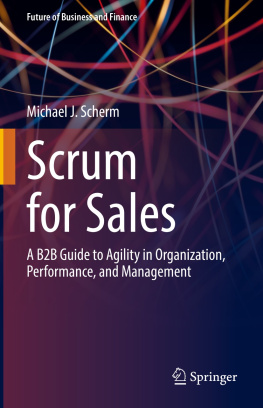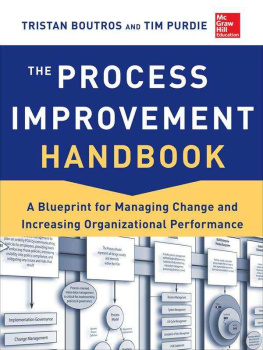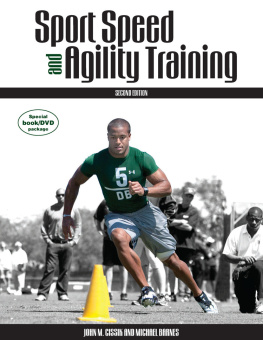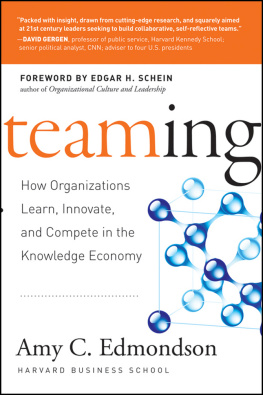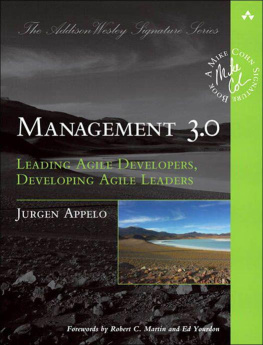Agile Management
Agile Management
The Fast and Flexible Approach to Continuous Improvement and Innovation in Organizations
Mike Hoogveld

Agile Management: The Fast and Flexible Approach to Continuous Improvement and Innovation in Organizations
Copyright Business Expert Press, LLC, 2018.
All rights reserved. No part of this publication may be reproduced, stored in a retrieval system, or transmitted in any form or by any meanselectronic, mechanical, photocopy, recording, or any other except for brief quotations, not to exceed 250 words, without the prior permission of the publisher.
First published in 2018 by
Business Expert Press, LLC
222 East 46th Street, New York, NY 10017
www.businessexpertpress.com
ISBN-13: 978-1-94744-183-5 (paperback)
ISBN-13: 978-1-94744-184-2 (e-book)
Business Expert Press Portfolio and Project Management Collection
Collection ISSN: 2156-8189 (print)
Collection ISSN: 2156-8200 (electronic)
Cover and interior design by S4Carlisle Publishing Services Private Ltd., Chennai, India
First edition: 2018
10 9 8 7 6 5 4 3 2 1
Printed in the United States of America.
Dedication
For Suzanne, Julius, and Floris
Abstract
An environment that is changing ever faster and deeper; markets that are becoming more dynamic and complex; competitor and customer behavior that is increasingly unpredictablethese developments are affecting all organizations. Whoever wants to survive in the future needs to adapt with lightning speed. Increasing numbers of organizations recognize that traditional ways of working are no longer adequate. They lack agility.
In this book, agility expert Mike Hoogveld shows us what we can learn from smart start-ups and other successful, innovative organizations. Using many academic insights and practical examples, he describes how to make your organization responsive by focusing on continuous improvement. Thus, he gives a very concrete answer to the crucial question with which so many organizations are struggling: How do we increase our agility?
The book includes an agile assessment to determine the agility of your organization. The book remains number-one bestseller in the Netherlands.
Keywords
Agile, change, customer centricity, high performance, innovation, leadership, lean, management, marketing, scrum, startup, team
Contents
I am, to be precise, 1 meter and 94 centimeters tall. And I weigh 93 kilos.
Quite a confession with which to start a book... But its not my goal to confess to you something about my physical fitness. Or to see how quickly you can calculate my BMI (24.7). So, you might ask, why do I share this with you.
To give a little air to one of my small frustrations. And this is not about a too-short bed in a holiday cottage, impossible postures in an airplane seat, or the fact that there are still very few beautiful clothes available in my size. What then?
It has to do with sport. For example, squash, which I find immensely enjoyablenot to watch but to play. Only, Im not so good at it, and that makes it a lot less fun. Losing all the time gets boring after a while. Thats why I stopped. Was it my technique? Tactical insight? Fitness? Sadly not. To put it clinically, it had everything to do with the inertia of mass.
For some reason, it seemed that all my opponents had the opposite physique to me. If we use a boxing analogy, they were clearly more super flyweight and I was more heavyweight. And that led to a pretty unequal struggle because strength is not so important in squash. It is mainly about tactics, technique, and mobility. With regard to tactics and technique, my opponents were not really superior to me, but in mobility... enough said. Because of their smaller bodies and lower weight, they were simply much faster and more agile. Their nimble turning and sprinting meant they responded much easier and faster to unexpected shots. They adapted directly to my strokes while I crashed into the walls feeling like a hippopotamus or simply fell over. After a while, in addition to a bad mood, I also developed chronic pain in my lower back.
I experience something similar in other sports. If I join my talented son in a game of fatherson football, I clearly dont look like Messi, to put it mildly. And along the rugged mountain-bike trail here in the dunes, I am always overtaken by men with small, light bodies. I thought may be boxing would suit me, but my opponents seemed to be faster than their shadows; often I felt like the punch bag.
Initially, I thought it was me: I was just too slow. But friends with similar physiques to mine seem to have exactly the same exasperation. They also avoid sports that require agility, maneuverability, and quick adjustments. Like them, I focus now on sports in which these factors play a negligible role, such as golf, rowing, swimming, running, and cyclingsports with predictable movements. And I stick with those (sports such as bowling, curling, and darts I leave to others, no matter how beautiful the shirts they wear).
What struck me about the sports that are better suited for my physique is that smaller, lighter men often are incredibly good at these too. And, naturally, that got me thinking: it seems like properties such as speed, agility, and maneuverability make the difference in sports characterized by frequent dynamic movements. That triggered my curiosity in my work as a consultant and in my PhD research. Could it be that the qualities of speed, agility, and maneuverability might also be important for organizations? So that organizations operating in dynamic environments, that have these characteristics, are more successful than organizations that lack them, or have them to a lesser extent?
So, a decade or so ago, I came across the path of agility and dived deeply and completely into it. There was a kind of snowball effect. While reading and interviewing, I was inspired by Darwins discoveries, by Jurans rediscovery of Paretos 80/20 rule, and by Demings PlanDoCheckAct approach to continuous improvement. By Toyotas success and Boyds OODA cycle. By the possibilities Scrum offers and the incredible results achieved in English cycling. And in recent years, also, by the Lean Start-up methodology. Fantastic; a whole new world opened up for me.
What immediately struck me in my consulting practice was that very few organizations are really agile. Most were able to adjust to competitor or customer changes in the market, but only very slowly, while they just complained that change kept happening and that it kept happening faster and faster. They lacked adaptability and, moreover, they were totally unaware of the phenomenon of agility.
Therefore, I decided to translate my insights into a process suited to those organizations, by combining proven methodologies and, where necessary, supplementing them with my own solutions. Through experimentation, I finely honed the concepts into an agile management approach which, in principle, can be applied to almost any organization.
The insights I gained during my fascinating journey, I would like to share with you, in the form of this book. It combines theoretical knowledge with a practical approach and practical tools. I hope this can inspire you as I too was inspired by the many books, articles, videos, studies, lectures, conversations, projects, and case studies that I have used.
I wish you lots of fun and success with your own agile voyage of discovery!

